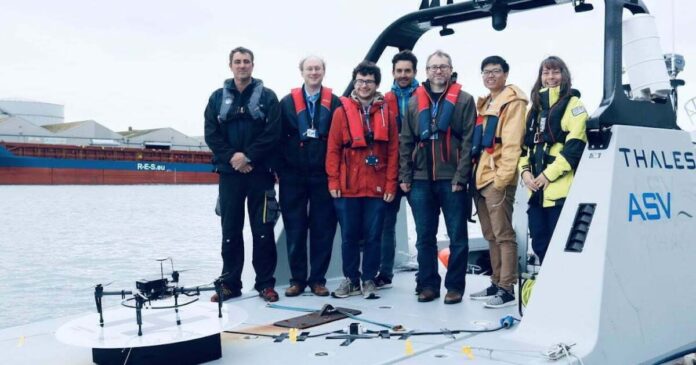If you need to charge your $1,000 cell phone, you can simply plug it in, or even more easily, just lay it on a charging mat. But what if something similar to NASA’s $2.7 billion Perseverance rover has somehow suffered damage to its nuclear battery, and is about to lose all power? Can’t it just plug itself in, or roll onto its own charging mat?
Maybe. But what if, due to an uneven Martian landscape, Mars dust clogging the physical connectors, mechanical damage, inaccuracy of sensors, or insufficient power left onboard, the rover can’t plug itself into its charging station, and can’t align itself perfectly with its wireless charger? Is it just going to die, 224 million km (140 million mi) from home, with the billions of dollars required to get it there mostly wasted?
That’s where Bumblebee comes to the rescue – and no, not the Transformer. Bumblebee Power is a spinoff company from Imperial College London (ICL) which is hoping that its latest project for wireless charging technology – a proof-of-concept high-frequency Inductive Wireless Power Transfer (IWPT) system – partly funded by the UK Space Agency in a project with MDA Space, will offer a massive advantage for all missions to the Moon, Mars, and beyond.
What makes Bumblebee’s wireless charging so promising?
Previously, devices such as the Mars Perseverance rover have needed their own power supply, such as the Multi-Mission Radioisotope Thermoelectric Generator, which converts heat from radioisotope decay into electricity. Such plutonium-based power generators carry dangerous health risks in the remote likelihood that they were disintegrated into an inhalable powder. But plutonium-238 isn’t cheap or easy to make, and according to a 2022 report, the US Department of Energy was then capable of producing only about 350 g of plutonium-238 per year.
So, according to Bumblebee Power, its IWPT offers advantages that could extend the mission life of devices such as rovers, thus reducing the multi-billion dollar price tag of interplanetary exploration. According to Bumblebee CEO James Dunning, “The next wave of robotic explorers heading to the Moon and beyond will rely on smarter, lighter technologies. By removing the need for physical power connectors, we can give these missions more freedom to move, operate, and endure – and in doing so, expand our ability to explore and understand space.”
Another Bumblebee advantage is the use of a much higher frequency for transmission. According to Paul Mitcheson, Professor of Electrical Energy Conversion at ICL and Bumblebee’s Senior Scientific Adviser, higher frequency allows for a bigger gap between the device sending the power and the device receiving it. “That’s beneficial,” he says, “for things like autonomous vehicle charging, drones, and e-mobility.”
How does wireless charging work?
Bumblebee’s biggest breakthrough is that its technology can wirelessly power devices even if they aren’t in perfect alignment, which is vital for missions that are hundreds of millions of kilometers from anyone who can perform repairs.
While Bumblebee’s technology is new, wireless charging – an application of Faraday’s Law – isn’t. So, how does it work?
Let’s say you take copper wire coil A, and run alternating current through it, which is changing at, say, 60 times per second, thus producing a clockwise magnetic field that is also changing at 60 Hz. Now, move coil A to “face” coil B, and coil B’s wire will respond by generating its own 60 Hz magnetic field, but moving counter-clockwise. The result is electricity that can charge a cellphone on a charging mat. It’s also how generators and alternators work.
Now, so long as the two coils are in phase (facing each other in parallel), coil A will cause coil B to generate its own opposite magnetic field. But nudge the coils even slightly out of phase, and coil A’s magnetic effect diminishes on the second. Turn coil A 90 degrees to coil B, or move it far enough away, and the magnetic fields won’t produce enough electricity to make even a tiny lightbulb glow.
That’s why Bumblebee Power’s plans for its new IWPT could be so significant, but offering far greater tolerance for non-alignment.
Humble Bumblebee origins
Ironically, Bumblebee isn’t some glamorous space-venturing enterprise that’s always had designs on building a power grid on Titan or a neon-glowing Las Vegas strip for a planet orbiting, well, Vega.
No, instead of offering images of robots, rovers, and extraterrestrial colonies on its the website, the UK outfit boasts how Bumblebee’s position-tolerant charging system is useful for portable electronic, autonomous systems, and even electric scooters.
But humble beginnings mean far less than grand trajectories. Bumblebee “launched” from the Wireless Power Lab at Imperial College London, which developed wireless charging technology for use with drones. New Atlas profiled that IWPT, which allowed drones to recharge in mid-air without needing a combinating landing/charging pad (and obviously without needing a charging cable).
According to Bumblebee, inductive charging has made little progress until now because previous IWPT units were inconvenient and bulky. But it says that compared to other wireless chargers, its current commercial units work at three times the distance, have three times the tolerance for misalignment, are easy to integrate, can handle any power need, work with a range of vehicles, and “can charge multiple devices from a single pad.”
So perhaps in the future, when you’re racing your landspeeder from Olympus mons to the Valles Marineris, you can pull onto into a Bumblebee charging station, and while you’re wirelessly charging your ride – even if you’re tilted or away from the pad – you can email Bumblebee with a hearty thanks. Just watch out for Tripods.
Sources: Imperial College London, Bumblebee Power


